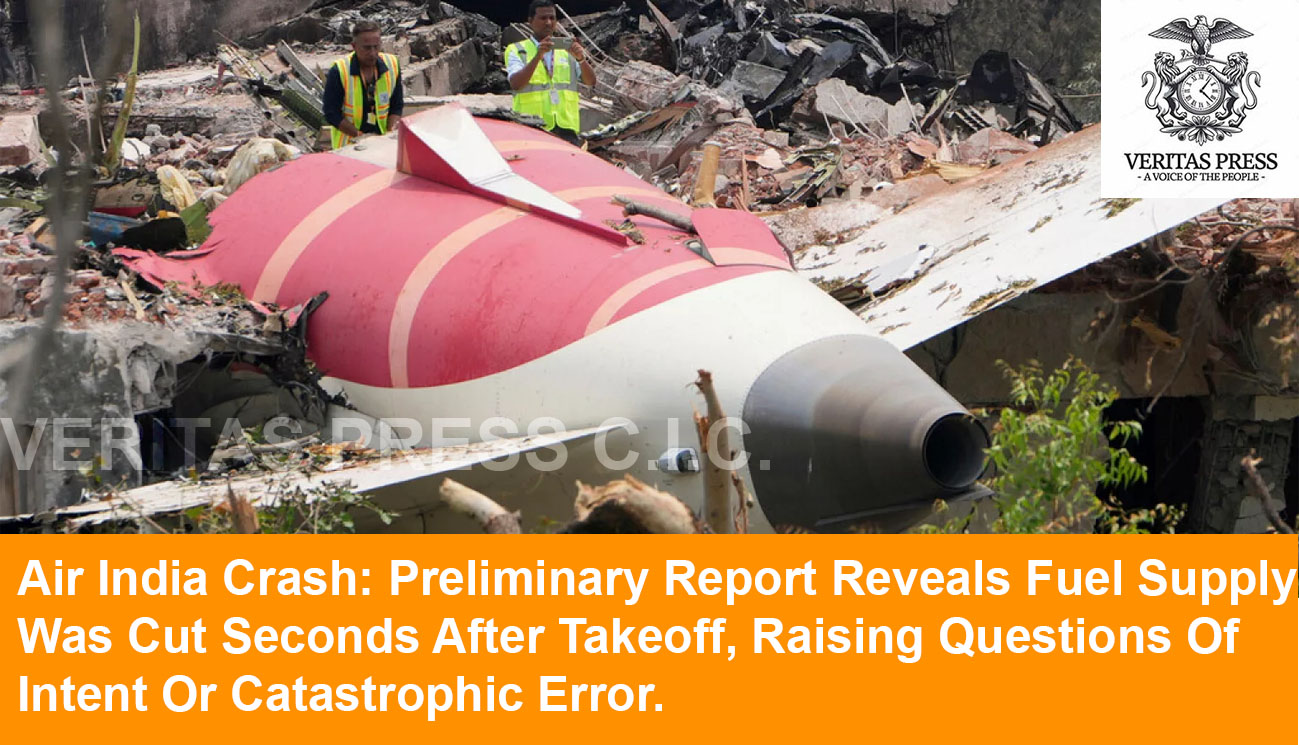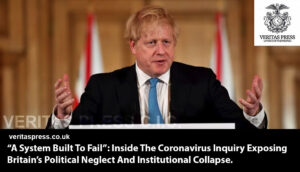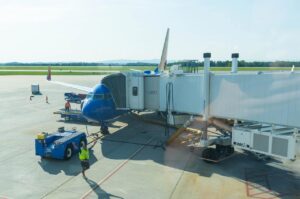Press Release: Veritas Press C.I.C.
Author: Kamran Faqir
Article Date Published: 12 July 2025 at 12:17 GMT
Category: South-Asia | India | Air-India
Source(s): Veritas Press C.I.C. | Multi News Agencies

Business Ads


One month after the catastrophic crash of Air India Flight AI171, which killed 270 people, including 53 British nationals and 29 civilians on the ground, a preliminary report by India’s Aircraft Accident Investigation Bureau (AAIB) has prompted new scrutiny, and growing speculation, over whether the crash was caused by a deliberate act or an extraordinary human error.
The London Gatwick-bound Boeing 787-8 Dreamliner plunged into a residential complex in Ahmedabad just moments after take-off on 12 June. Investigators now confirm that both engines lost power after the plane’s fuel cutoff switches were manually flipped from “run” to “cut-off” just three seconds into flight. This left the aircraft without engine thrust at a critical stage of take-off.
The cockpit voice recorder captured one of the pilots asking the other, “Why did you cut-off?”, to which the second pilot responded, “I did not do so.” The AAIB report, spanning 15 pages, does not specify which pilot made each statement, nor who issued the distress call moments later: “Mayday, mayday, mayday.”
A Switch No One Was Supposed To Flip:
Experts have emphasised that the fuel switches on the Dreamliner cannot be accidentally flipped. Unlike touchscreens or sliders, these controls are mechanical and require a deliberate pull and motion. “They are not something you can bump or graze,” aviation consultant and former pilot Captain Mohan Ranganathan told NDTV. “You have to pull them out of their secure slot to move them. That’s not accidental. It’s intentional.”
Captain Ranganathan was among the first to publicly raise the possibility of deliberate pilot action. “It’s either deliberate, or we’re looking at one of the most baffling human errors in modern aviation,” he said. His remarks have amplified concerns of a potential pilot suicide or sabotage scenario, echoing comparisons to previous tragedies such as Germanwings Flight 9525 in 2015.
Others, like aviation analyst Tim Atkinson, take a cautious but sobering stance: “There are very few plausible explanations. One would be an extraordinary, almost unthinkable human error. The other, more troubling, is an intentional act. That’s not an allegation, it’s a reality of the investigative process.”
Recovery Attempts Before Final Descent:
The report indicates that after the initial cutoff, there were attempts to restart the engines. Engine 1 appeared to briefly begin recovering, while Engine 2 “relit but could not arrest core speed deceleration.” Witnesses on the ground and CCTV footage showed the deployment of the aircraft’s ram air turbine, a backup power source that deploys during engine failure, confirming a total power loss.
Seconds later, the aircraft crashed into a hostel at Byramjee Jeejeebhoy Medical College. Trainee doctors inside the complex described the moment as “like an earthquake.” Flames consumed the dining hall. “We heard the explosion and ran, but then turned back to help the injured,” said Navin Chaudhary, a survivor who pulled several others from the fire.
Of the 242 people onboard, only one, British-Indian national Ramesh Viswashkumar, seated in 11A near an emergency exit, survived. His brother, also aboard the flight, did not. His escape has sparked renewed public interest in which plane seats are the “safest,” though experts caution there is no universal answer. “Survivability depends on many factors, impact angle, fire, structural failure, not just seat location,” said Mitchell Fox of the Flight Safety Foundation.
Scrutiny Turns To Air India And Aviation Oversight:
Beyond the accident itself, the tragedy has cast a harsh spotlight on Air India’s broader safety record and India’s civil aviation oversight. Days after the crash, the Directorate General of Civil Aviation (DGCA) ordered additional maintenance checks on all Air India 787 aircraft. While no structural issues were found, the DGCA later flagged multiple instances of repeated unresolved technical defects, indicating “ineffective monitoring.”
Meanwhile, Air India’s budget subsidiary, Air India Express, is facing investigation by the European Union Aviation Safety Agency after allegedly falsifying compliance records related to engine part replacements on Airbus A320 aircraft.
Air India has stated it is cooperating fully with Indian and international regulators. In a statement released Friday, the airline said: “We continue to mourn the loss of lives in the AI171 accident. We are extending all support to the families of those affected. Due to the ongoing investigation, we cannot comment further.”
Boeing, the manufacturer of the Dreamliner, also issued a statement expressing condolences and vowing to support the inquiry. “Our thoughts remain with the families of those on board and those affected on the ground. We are fully cooperating with investigators.”
Pilots’ Union Alleges Lack Of Transparency:
The Airline Pilots’ Association of India (ALPA India) has sharply criticised the investigation process, alleging a lack of transparency and fairness. “We are surprised at the secrecy surrounding these investigations,” ALPA President Captain Sam Thomas said in a statement to the BBC. “We believe the inquiry is being conducted under the presumption of pilot guilt. We demand the inclusion of qualified personnel and observers to ensure transparency.”
This public challenge comes amid growing tension between the pilots’ union and regulators, as speculation over potential sabotage or suicide scenarios threatens to overshadow procedural analysis and systemic accountability.
World’s Deadliest Aviation Disaster In A Decade:
With 270 confirmed fatalities, including victims on the ground, the crash of AI171 is the deadliest civil aviation disaster worldwide since 2014’s downing of Malaysia Airlines Flight MH17. It is also the first major crash involving a Boeing Dreamliner since the aircraft type entered service in 2011.
The AAIB’s report is preliminary, and a final investigation, likely involving the U.S. National Transportation Safety Board (NTSB), could take several months. Investigators are still analysing the flight data recorders and cockpit voice recordings in collaboration with U.S. and European agencies.
Meanwhile, families of the victims continue to demand answers. Legal claims are reportedly being prepared both in India and the UK, including by families of the 53 British nationals who perished on the flight. Calls are growing for greater international oversight of India’s fast-growing aviation sector, which Prime Minister Narendra Modi has repeatedly held up as a cornerstone of his development agenda.
What Happens When Fuel Cutoff Switches Are Flipped?
According to aviation engineers, the fuel cutoff switches are never meant to be touched during takeoff or cruise. They are used to shut down an engine after landing or in cases of a severe emergency, such as an onboard fire. “Flipping both to ‘cutoff’ mid-air is effectively turning the engines off at the worst possible time,” explained U.S. aviation expert John Nance. “It would cause immediate thrust loss, potentially making recovery impossible, especially at low altitude.”
The AAIB’s findings have not yet identified any malfunction or external factor that could have caused the switches to flip automatically.
The Road Ahead:
While authorities continue their forensic analysis, the implications of the AI171 crash are likely to ripple far beyond Indian airspace. Already, it has exposed fault lines in regulatory oversight, flight crew monitoring, and crisis communication within India’s rapidly expanding aviation industry.
For now, the question remains: If neither pilot admits to flipping the fuel switches, and there’s no evidence of technical failure, who, or what, turned off the engines of Flight AI171?
Conclusion:
The crash of Air India Flight AI171 is not merely a tragic accident; it is a symptom of a deeper systemic failure, and possibly something far more sinister. The AAIB’s preliminary findings point to an unmistakable truth: both engines were manually shut down within minutes of take-off. Such an action requires deliberate physical effort, pulling and rotating each fuel control switch. This cannot be explained away as mere oversight or accident. The cockpit voice recording, with both pilots denying responsibility, only deepens the suspicion and underscores the urgency of a criminal probe.
If this was a deliberate act, it represents a catastrophic breach in aviation security, raising urgent questions about pilot vetting, cockpit monitoring, and mental health oversight. If it was an unintended error, it exposes a staggering collapse in pilot training, safety protocol enforcement, and system redundancies that should have made such a dual shutdown impossible.
But beyond the cockpit lies a broader pattern of neglect and impunity. Air India is already under scrutiny for falsified maintenance records, DGCA audits have exposed repeated safety violations, and internal whistleblowers have long warned of corner-cutting practices. The Indian aviation sector now faces a credibility crisis, one that cannot be resolved through opaque investigations and selective blame.
Families of the 270 victims deserve more than a technical report, they deserve the truth. The public deserves transparency. And the aviation industry, both in India and globally, must reckon with a chilling possibility: that this disaster may not be an anomaly, but a warning. A warning that without accountability, regulation, and reform, another catastrophe is not only possible, but inevitable.

























